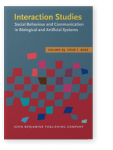Vol. 23:1 (2022) ► pp.58–88
Differences in game playability between healthy players and problematic players
Games played on mobile phones or tablets have become a serious game platform. In the new International Classification of Diseases in 2019, the WHO now includes video game disorder as a mental disease, this highlights the seriousness of game addiction which has now become a global problem. Game design may be one of the factors that affect game addiction. Game playability can be used to evaluate the game design and to determine the features that can cause game addiction. The purpose of this study was to explore the relationship between playability and game addiction, and a comparison of the difference in playability among healthy players (N = 1286) and problematic players (N = 278) that allows game developers to design games in ways that may reduce addiction while maintaining or improving playability. In this study, 1564 valid questionnaires that collected data about the Game Playability Scale and the Game Addiction Scale showed that (1) The level of playability in the problematic players was significantly higher than in healthy players. (2) The degree of correlation between playability and game addiction in the problematic players was lower than in healthy players. (3) Some playability factors and addiction factors are negatively correlated.
Article outline
- 1.Introduction
- 2.Related work
- 2.1Why do people play mobile games?
- 2.2Playability and game design
- 2.3Game addiction
- 3.Method
- 3.1Measures
- 3.2Questionnaire distribution
- 3.3Analysis method
- 4.Results
- 4.1Participants
- 4.2Reliability of scales
- 4.3Results of correlation analysis
- 4.4Playability and game addiction factors between healthy and problematic players
- 4.5Playability factors between healthy and problematic players in different games
- 5.Discussion
- 5.1A comparison of the playability and game addiction factors between healthy players and problematic players
- 5.2Comparison of the time factors between healthy players and problematic players
- 5.3Limitations
- 6.Conclusion
-
References
